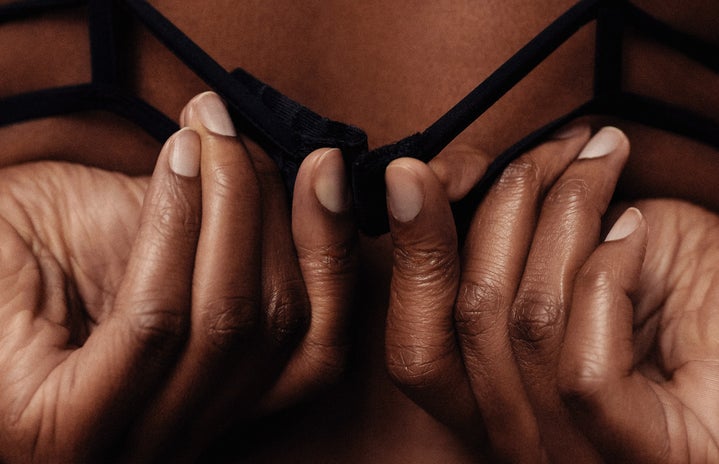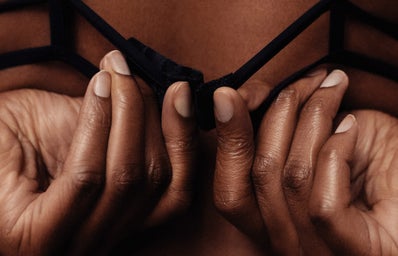I don’t like bras. I mean, does anyone really?
Aren’t we constantly making jokes about ripping the darned thing off the second we get home? Every new underwear company advertises itself as “comfortable”… so it’s safe to assume that most of us find bras uncomfortable by default, right?
The sizing is always an issue. The cups are too gapey or small; the bands are too tight or too loose. Even if you find a good bra, in a few month’s time, it’ll probably be too worn out to fit the same way. Bras are just a hassle.
Recent rhetoric may have us mistakenly convinced that bras, corsets, and other variations of shapewear as a whole were invented by the patriarchy to restrict and package up women for the male gaze. But historically speaking, bras and bra-like pieces have been around forever as a garment meant to support and stabilize breasts. Still, men have always had something to say about women’s bodies, including their use of bras. Men from the 16th century complained that bras were too provocative by enhancing a woman’s breasts too much. Sound familiar? While we could consider the male gaze as the main source of the fluctuations in what was the “desirable” breast shape, bras and corsets have always been a staple in women’s wardrobes for our own practicality, and for that, I reserve some respect for them.
However, personally, I find bras unnecessary, as I am a size 34AA. That’s a size 34 band and a DOUBLE A cup. They don’t sell bras in my size at Target, and if I specifically go to a lingerie store, they’re bound to have only a few options in my size.
I’m not upset about my bra size, quite the contrary, as I’m a proud member of the Itty Bitty Titty Committee. I actually feel pretty lucky to be spared the consequences of having bigger breasts. I’m grateful not to have back pain or have to double up on suffocating sports bras when I exercise. I’m fortunate that my body isn’t constantly being sexualized and taken advantage of in the media. I’m thankful that I don’t actually need bras.
What I’m not thankful for, though, is the expectation that our society places on women’s bodies in the first place. Just like in the 16th century, men continue to comment on women’s breasts.
Either your boobs are too big or too small. They’re too saggy or too perky. They’re too flat or too provocative. Society employs a myriad of adjectives to describe women’s bodies, always leaning towards hypersexualization, disdain, or both, and it’s created a narrative that our bodies must serve some purpose to onlookers. They are not enough to simply be and keep us alive. Bras may exist because people with breasts need them, but the patriarchy has made us rely on them for everyone else’s sake, rather than our own. It’s no wonder why some of the main policers of women’s bodies have become ourselves.
Personally, I don’t want to wear a bra because I have no use for one. But I’ve been convinced to be concerned about the shape of my chest if I go out without a bra on. What about my nipples? Oh, what a scandal I’d be creating if people could see their existence! People would notice my personal choice not to wear one and be distracted. Uncomfortable. They might label me promiscuous.
It upsets me just how much this mindset has a hold of myself and many other women. I’m angry with these unspoken rules, but my mother believes in them to protect ourselves. My friends with bigger breasts are disappointed when they can’t wear certain outfits because their boobs are “too big,” though the actual concern is about image, not size. All of us are confined by the patriarchy’s influence over women’s bodies, either directly by the male gaze or one internalized by ourselves, and it’s time that changed.
We’ve had sparks in dismantling the patriarchy’s hold on women’s bodies before. Lots of young women spoke out about society’s attention to upholding beauty standards over appreciating women as people during the rise of Second Wave Feminism in the 60s and in the 70s. The joyous rejection of symbolic objects: heels, makeup, and, of course, bras were spun into the widely misunderstood myth of bra-burning used to weaponize against feminists of the time by labeling them as “radicals.” The #FreeTheNipple movement had its moment in the past decade, pointing out the double-standards between society’s attitude towards topless men in comparison to topless women, due to the ingrained sexualization of female breasts. Clearly, we’re still fighting for the freedom to do what we want with our bodies (We don’t even have to get started on the abomination that is the increase in denying reproductive rights across the U.S.).
Let me be clear: like the members of these previous movements, I am not opposed to bras (and other traditionally female-assigned items) full-stop; rather, I believe that the use (or rejection) of them be at the full discretion of each individual, uninfluenced by what women are supposed to look like.
So sure, maybe society’s not ready to accept braless women as the norm yet; we definitely won’t be the more we sexualize boobs in media and entertainment. I’m merely suggesting that WE allow ourselves to stop caring so much about what our boobs look like and how we’re wearing our clothes. Societal pressure is intimidating, of course, but it has to start with us, liberating ourselves.


